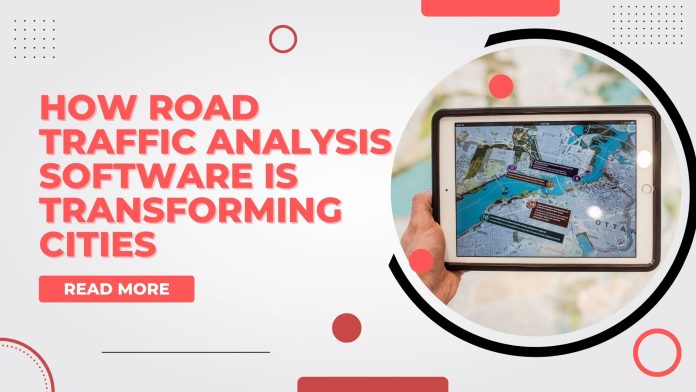Road analysis software plays a crucial role in analyzing road traffic by significantly enhancing data collection processes. This innovative technology utilizes advanced algorithms and powerful capabilities to gather vital information about traffic patterns, vehicle speeds, and congestion hotspots with exceptional accuracy. Gone are the days when manual data collection methods were relied upon, as they were time-consuming and prone to human error.
Thanks to this cutting-edge software, transportation experts now have access to a wealth of real-time data that enables them to make informed decisions and enhance the efficiency of our roads. Essentially, it provides a means for predicting traffic flow akin to having a crystal ball behind the scenes of transportation analysis.
In today’s fast-paced world, relying on manual data collection methods to gather traffic information seems antiquated and inefficient. This is where automated traffic counts come into play, revolutionizing the way we analyze road congestion and devise transportation solutions.
By harnessing big data through state-of-the-art road analysis software, authorities can tap into an abundance of information that empowers them to make well-informed decisions about improving traffic flow and mitigating bottlenecks. This invaluable tool allows decision-makers to identify patterns, comprehend peak hours more effectively, and even predict future trends with remarkable precision.
Automated traffic counts not only save time but also provide accurate data essential for planning infrastructure upgrades or implementing smart city initiatives. With real-time insights readily available at their disposal, policymakers can create more efficient transport systems that alleviate congestion issues while improving overall mobility standards for commuters.
From Red to Green Light: A Look at How Traffic Count Software Works
In this digital age, road traffic analysis software has revolutionized the way we understand and manage traffic flow. It’s like having a crystal ball that reveals hidden insights about our roads! But let’s take a closer look at how this wizardry actually works. Firstly, these programs rely on advanced algorithms to detect and track vehicles passing through specific points on the road.
By analyzing video footage or data from sensors installed along the route, they can accurately count how many cars, trucks, or even bicycles zoom by. But it doesn’t stop there! These smart-systems can also classify vehicles based on size and speed, providing invaluable information for city planners and transportation authorities.
With this wealth of data in hand, decision-makers can make informed choices to optimize traffic flow and reduce congestion. So next time you’re stuck in bumper-to-bumper chaos, remember that behind the scenes lies an army of ones and zeros working tirelessly to improve your commute experience.
In the world of road traffic analysis, automated programs have become the unsung heroes that streamline counting processes. With their advanced algorithms and cutting-edge technology, these software solutions are like a baton being passed from one runner to another in a relay race. They take over the tedious task of manually counting vehicles on roads, freeing up valuable time for traffic engineers and analysts.
These programs use sophisticated image recognition techniques to identify different types of vehicles and accurately count them as they pass by. They can even differentiate between cars, trucks, motorcycles, bicycles, and pedestrians with remarkable precision. By automating this process, traffic count software ensures accurate data collection while saving time and effort for those involved in analyzing road traffic patterns.
Shaping Our Cities: The Impact of Road Traffic Analysis on Urban Planning
In the busy world of city planning, it’s important to have an understanding of our cities and their streets. This is made possible by road traffic analysis software, a valuable tool that allows city leaders to learn about traffic patterns, congestion areas, and even how pedestrians move around.
With this information, they can make smart choices about improving infrastructure and transportation options that benefit everyone. From dealing with rush hour traffic jams to making public transportation routes more efficient, road traffic analysis software helps city leaders manage urban life easily and effectively.
So next time you’re stuck in heavy traffic, remember dedicated people are using advanced tools behind the scenes to keep our cities running smoothly. Urban planners are using road traffic analysis data to create more sustainable cities. By studying patterns and trends, cities can improve transportation and reduce environmental impact.
This information helps identify congested areas, leading to the development of solutions like bike lanes or public transit systems. It also helps optimize traffic flow with smart signals or roundabouts. With this technology, city leaders can envision a future where cars are just one part of a bigger picture that includes walking, biking, and public transit options. This approach aims to make our cities cleaner and healthier for everyone.
The Future of Urban Landscapes – Empowered by Upgraded Tech
In the future, getting around busy cities will be much easier thanks to smart traffic solutions. These innovative technologies use software to analyze traffic in real-time and provide helpful information like congestion levels and alternative routes. They can even predict future trends! This upgraded tech will make it easier for people to decide how to get from point A to point B, reducing travel time and stress.
Not only do these smart traffic solutions benefit individuals, but they also help create sustainable cities by improving transportation efficiency and reducing carbon emissions. As cities continue to grow, we must plan them efficiently and sustainably. Luckily, advanced technology is helping us do just that. With road traffic analysis software and traffic count software, city planners can make data-driven decisions about transportation networks and congestion reduction.
By analyzing patterns in traffic flow, they can identify problem areas and come up with solutions. This not only makes our cities more efficient but also helps protect the environment.
By minimizing unnecessary idling time for vehicles through better route planning and optimized signals, we can reduce air pollution too. With upgraded technology giving urban planners precise data insights, we can look forward to a future where our cities are smarter, greener, and more sustainable
Wrapping Up
In summary, road traffic analysis software is changing the way urban planning is done. This new technology helps planners understand traffic patterns and make smart decisions about building roads and managing transportation.
By using this software, cities can improve traffic flow, reduce congestion, and increase efficiency. It also helps identify areas where accidents or delays are likely to happen, improving safety measures. With this information, planners can create safer spaces for pedestrians and make cities more accessible for everyone.
As we look ahead to the future, it’s exciting to think about how advanced technology will continue to transform our cities. Road traffic analysis software will play a big role in creating sustainable, efficient cities that prioritize people’s needs while minimizing harm to the environment.





